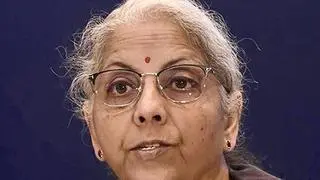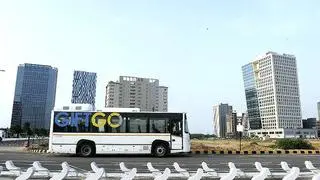Even after taking all the political risks, the Manmohan Singh Government has indicated to take more risk for achieving an average economic growth of 8.2 per cent during the 12th Five-Year Plan starting April 1 this year.
The Plan document has talked about three alternative scenarios for the economic growth.
3 alternative scenarios
The first scenario ‘Strong Inclusive Growth’ talks about 12th Plan growth projection of 8.2 per cent with 6.7 per cent in 2012-13 and 9 per cent in 2016-17. The second scenario ‘Insufficient Action’ feels growth may decline to 6-6.5 per cent while the third scenario ‘Policy Logjam’ can drift down the growth further to 5 per cent.
Addressing the full Planning Commission ,eeting on Saturday, Prime Minister Dr Manmohan Singh said: “I believe we can make scenario one possible. It will take courage and some risks but it should be our endeavour to ensure that it materialises. The country deserves no less.”
This meeting was called to finalise the document before getting final approval at the meeting of National Development Council (a Centre-States body).
Bold measures
This statement has come after the Government decided to open the floodgate for foreign direct investment, sell-off in 4 PSUs and most sensitive cutting the subsidy on diesel and LPG. Now more action is expected next week.
Singh also mentioned that the economy has gained many strengths. Now the Government’s immediate priority must be to orchestrate a rebound in the second half of the current year. “We should then try to accelerate growth to reach around 9 per cent by the end of the Plan period,” he said.
Core projects
The most important area for immediate action is to speed up the pace of implementation of infrastructure projects. This is crucial for removing the supply bottlenecks which constrain the growth in other sectors. It will also boost investor sentiment to raise the overall rate of investment.
The infrastructure ministries must set ambitious targets for their sectors over the 12th Plan.
Infrastructure investments
The Government has set of a target of 1 trillion dollar of investment in infrastructure during the Five-Year Plan period.
In this regard he said: “I will personally review the performance of the infrastructure ministries compared with targets at the end of the first six months. I hope that out of this review we can define an agenda for improved implementation.”
Long-term agenda
Talking about the long-term agenda, he listed three broad components. One is the set of Government programmes aimed at achieving specific objectives in sectors such as health, education, water resource management, infrastructure development, and a number of programmes aimed at strengthening the processes of inclusiveness.
The second component relates to macro-economic balances. Here it is required to reviving the investment to achieve 8.2 per cent growth, bringing down the fiscal deficit and containing the current account deficit within 3 per cent.
High fiscal deficit
He said that fiscal deficit is too high and is attracting adverse comment from analysts. It must be brought down over the medium term to release domestic resources for productive deployment in the economy.
Since export prospects are not very encouraging, the Plan projects a current account deficit of 2.9 per cent of GDP. This must be financed mainly through foreign direct investment and foreign institutional investment flows, so that reliance on external debt is contained.
“I believe we can attract the financing we need, provided our fiscal deficit is seen to be coming under control and the growth momentum is regained,” he added.
The third key component of the Plan is the set of policies which can improve performance in individual sectors.







Comments
Comments have to be in English, and in full sentences. They cannot be abusive or personal. Please abide by our community guidelines for posting your comments.
We have migrated to a new commenting platform. If you are already a registered user of TheHindu Businessline and logged in, you may continue to engage with our articles. If you do not have an account please register and login to post comments. Users can access their older comments by logging into their accounts on Vuukle.